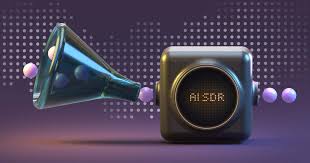The AI SDR technology stack comprises the components that constitute the growing world of AI-driven sales. Yet, with so many buzzwords and complicated terminology, it becomes a little murky to understand what exactly is contained within an AI SDR technology stack. Here, we break down what’s part of an AI SDR stack in layman’s terms to understand better how AI truly helps sales teams with day-to-day operations.
The Basics: Data Collection Tools
Without fail, due to implementation of AI SDRs comes the gain of good data collection. Data collection tools gather information about potential sales leads from personal contact info, job title and position, to company size and sector. Many of the top AI SDR platforms specialize in sourcing and organizing this data efficiently, making outreach more targeted and effective. Quality data helps the AI understand who it is talking to via compiled databases, allowing for deeper probing questions and, at the end of the day, helping SDRs talk to the right people at the right time.
Intelligent Prospecting: Finding the Right Leads
AI-driven prospecting tools allow student resources development (SDR) to quickly and efficiently gauge who has interest in specific products/services and ranks them appropriately as prospective leads. These tools rely on data collection patterns to achieve this, singling out those who seem most likely to be interested and most likely responsive to outreach. Instead of guessing or piling through other tools to create inefficient time-suck efforts, AI allows sales teams to focus their energy and time on the most critical leads to prospect more effectively.
Effortless Outreach: Intelligent Email Programs
Gone is the stress of sending out emails thanks to AI. Instead, personalized emails are generated to reach out to new prospects for possible sales. These programs analyze all the information gathered about a potential lead and create tailored emails suited to the prospect’s problems and concerns. The automation process in such a smart way means that SDRs can reach everyone at the same time and accurately without losing the personal touch needed to gain interest and develop genuine connections.
Conversational AI: Interacting at the First Point of Contact
Conversational automation takes it one step further by incorporating AI and allowing prospects to have live conversations. These tools generate pre-programmed responses to inquiries or concerns in a conversational tone that not only provides helpful information but also gently guides prospects along the sales funnel. By managing these low-level conversations, these tools allow SDRs to focus on those conversations that are complicated or of critical importance.
No Need to Schedule: AI Calendar Resources Manage That, Too
Once a prospect has spoken to someone in your company, hopefully, they will need to schedule time for meetings in the first place. However, trying to pinpoint a mutually convenient time slot can be frustrating; however, AI calendar resources assess calendars and negotiate availability without the SDR ever having to get involved. These tools send out invite holds and reminders as well, allowing SDRs to use the time they would have struggled with appointments preparing for meaningful conversations instead. This boosts SDR confidence and lowers anxiety.
Aware of prospect interest through behavioral tracking
When prospect interaction occurs with emails, the company website, and other resources used for sales, behavioral tracking applications take note. This technology allows the SDR to be privy to real-time information about which prospects are more interested, which assets get the most traction, and when a prospect is ready to engage with a salesperson. By removing guesswork from the equation, sales teams can reach out through more meaningful and well-timed campaigns to almost ensure success.
CRM integration
The top AI SDR stack integrates with Customer Relationship Management (CRM) systems. These web-based platforms track communication, emails, and notes about potential buyers all in one location. AI helps ensure everything is logged correctly and also suggests subsequent steps based on prior suggested activities. The longer an SDR can stretch through the sales funnel without interruption, the better.
AI sales coaching
For those who want live support to improve their skills, AI sales coaching tools provide real-time feedback and suggestions during calls. These tools assess live calls and offer feedback on tone, pacing, word choice, and objection rebuttals (or failures) afterward, assessing performance with constructive criticism that keeps an SDR growing, rendering better results, and making sure no potential buyer feels like just another digit.
Compliance Considerations with AI Usage
Yet another required element of a technology stack is ethics and compliance focused software. These AI options ensure that SDRs are above board in legal matters and privacy concerns. For example, these AI integrations automatically evaluate if outreach is compliant and provides ethical requirements for messaging. Thus, SDRs are empowered to prospect with the comfort that they will not unknowingly cross personal privacy lines or engage in unethical behavior.
Human Oversight: The Crucial Balancing Element
But while AI manages and simplifies so much of the sales development process, humans are still needed to manage the end result. For instance, AI outreach still needs to be vetted by sales teams to ensure it matches brand voice, sounds authentic and genuinely resonates with people. The combination of smart automated AI efforts and the meticulousness of a human on the backend is the ideal combination for consistent and effective sales.
Measuring Success: Performance Analytics Tools
AI-driven performance analytics fragments SDR performance into effectiveness and offers specific, constructive feedback at each incremental stage from data to actionable information that increases sales. SDR teams that will soon have access to such advanced analytical capabilities will receive feedback on performance metrics such as email open rates, response rates, time to respond, click through rates, conversion rates and levels of engagement with prospects on a microscopic level. Such tracking of engagement on a micro-level gives SDRs the overview they need to know what’s working and what isn’t in the moment rather than at a later stage when it’s too late to fix the oversight.
Moreover, this type of performance analytics eliminates the guesswork and gut instinct feedback which postpones improved sales decisions. When SDRs know exactly how they’re doing based on real-time data, they don’t have to wait until the weekly recap huddle to change strategies they can do so mid-day. With precise, performance-based feedback, SDRs can reflect on their abilities, change their pitches and consider the most appropriate time to contact prospects sooner rather than later. This encourages better contact and messaging relevancy.
Moreover, AI analytics are forward-looking, so sales teams can use AI to assess what’s coming and recalibrate their engagement efforts. If SDRs see specific patterns emerging in what prospects are up to, they’ll stay ahead of developing demands and shifting markets, providing prospects with what they want before it becomes critical. In short, AI performance analytics foster SDR team success both present and future, as the ability to constantly readjust strategy based on information provides a quantifiable boost to the sales process efficacy.
Continuous Improvement: Machine Learning
Machine learning, one of artificial intelligence’s most popular developments, ensures that SDR technology is constantly evolving and changing. Essentially, machine learning is the artificial intelligence collection and processing of data over time from sales agents interacting with potential clients. This artificial intelligence understands from each encounter, determining similarities, patterns, trends, and actions relative to specific demographics, industries, products, and services. The more focused information it gets regarding specific touch points, the better its algorithm for determining appropriate actions with accuracy, relevance, and responsiveness.
As a result, the SDR technologies utilizing this artificial intelligence are forever up to date and precise. The more an AI can ascertain what a sales agent and a potential client is going to do during a call based on prior calls whether it’s repeating a pitch or a brief pause in dialogue the more it can suggest subsequent actions, adjust talking points or note even the most subtle shift in interest level from potential clients. The consistent refining of options in artificial intelligence has improved the quality of communication and outreach; thus, SDR teams can have more accurate and compelling suggestions over time.
In addition, the ability of machine learning to process enormous amounts of data and implement adjustments in almost real-time means that SDR teams can respond to market developments, competitive challenges, and evolving customer needs almost immediately. Instead of relying on traditional approaches or more fixed processes, sales teams can harness insight that continually evolves to inform their strategies on the fly. Being relevant in real-time not only enables organizations to surpass customer demand but also increases conversion rates and ensures organizations stay one step ahead of those employing more fixed approaches.
Training Sales Teams to Leverage AI Effectively
Moreover, where implantation can occur instantly once access to the AI SDR tech stack is established, implementation support and training are essential. The ideal training would specifically cater to the needs of the sales team; for example, it shouldn’t focus merely on functionality of how to do something but also on why it’s important. SDRs need to know how they work and why they’re using them and how the AI solutions will change their day-to-day efforts and long-term sales potential.
The more anticipated new access is clearly communicated to the SDR based on each AI solution the quicker lead responses, more effective outreach, decreased administrative burden the easier it will be for SDRs to validate their newfound productivity requirements with established daily routines.
There needs to be ongoing support post-implementation, as well, for troubleshooting and questions as sales teams start employing AI-based solutions regularly. For example, ongoing feedback loops, training touchpoints and resource location can make SDRs feel confident and empowered to use such products. Similarly, ongoing training refreshes can solidify best case scenario solutions and ensure sales teams are aware of the advancements as the AI learns more over time.
Thorough training and continuous support foster a culture of continuous engagement and development, spurring sales teams to relay suggested adjustments and personal findings. This level of teamwork simultaneously identifies areas for improvement and irons out any small issues in real-time to adjust processes for optimal application of AI SDR Platforms. Therefore, trained and supported in the proper manner, AI SDR solutions make SDRs feel supercharged and empowered with the technology for increased effectiveness, improved accuracy, and trustworthy and effective sales outcomes.
The Bottom Line: AI SDRs in Clear Terms
Ultimately, A.I. SDR tech stack is just that, a unique, powerful yet practical set of technology tools to make the sales process more streamlined and faster. By leveraging this tech based on A.I., sales teams become more productive as monotonous day-to-day tasks are completed more efficiently, everything from prospecting and emailing to calendar requests and follow-ups. In addition, A.I. programs foster hyper-personalized outreach by analyzing the activity, habits, and touchpoints of potential customers and giving salespeople pitches to better build relationships with those they hope to sell.
Perhaps the strongest component of A.I. Driven SDR technology, however, is the combination of automated actions and human inclusion. For instance, if sales reps spend less time on menial tasks and more time on income generating actions that require extensive relationship-building, person-to-person interaction, and outside-the-box innovative strategies to gain interest, the better. Furthermore, A.I. applications offer a wealth of information that provides SDR teams with everything they need to know about a prospect and what they are looking for before they even get a question out. The integration of cold, hard facts generated strictly through data with human understanding helps ensure that sales conversations feel organic and have meaning behind them.
Ultimately, by integrating such intelligent solutions into their processes, companies can revolutionize their overall sales performance. AI SDR tools not only supplement operations and boost efficiency, but they enable sales teams to foster deeper relationships and trust with potential and current customers. This proactive outreach and personalized approach not only embellishes the customer experience but subsequently, higher retention and conversion rates and proper growth for the long term. In a constantly competitive marketplace, AI SDR tools offer the ultimate advantage to keep companies ahead of the game for years to come with effective success and excellence.




